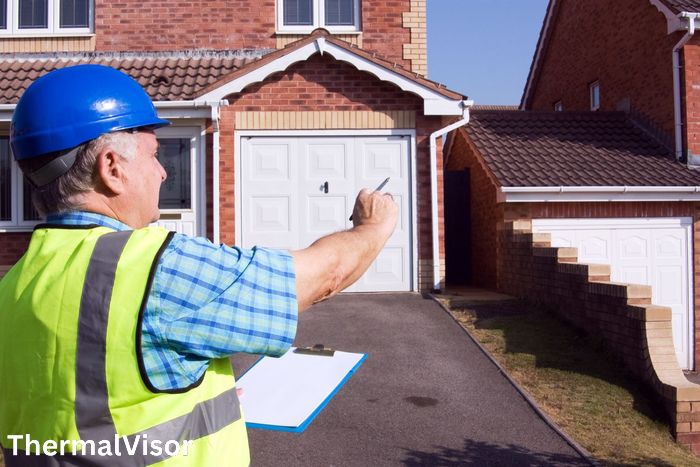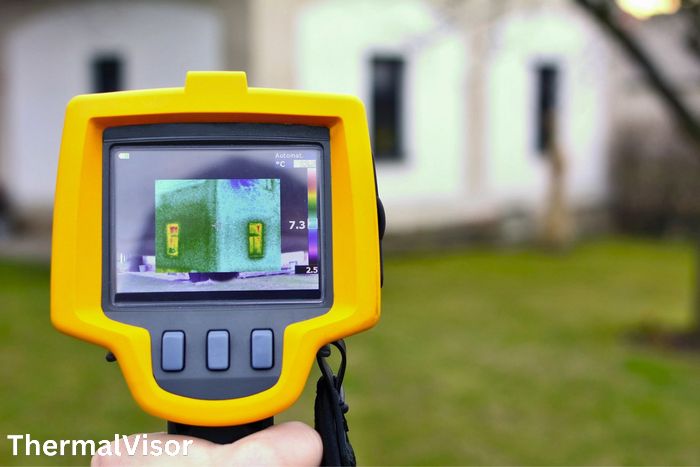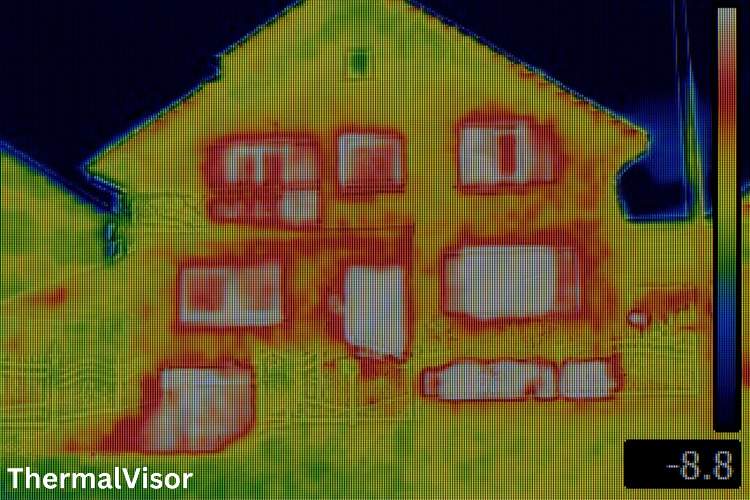A thermal imaging survey is a non-invasive method of detecting heat patterns and temperature variations in buildings, electrical systems, and mechanical equipment. It uses thermal imaging cameras to capture infrared radiation emitted by objects and converts it into a visible image. This technology has become increasingly popular recently due to its ability to identify potential issues before they become major problems.
Thermal imaging surveys are commonly used in a variety of industries, including construction, electrical, and mechanical. In construction, thermal imaging surveys can help identify potential issues with insulation and air leakage, which can lead to energy loss and higher utility bills. In electrical and mechanical systems, thermal imaging surveys can detect overheating components, loose connections, and other issues that may lead to equipment failure or fire hazards.
Overall, thermal imaging surveys are a valuable tool for identifying potential issues and improving the efficiency and safety of buildings and equipment. By identifying issues early on, businesses can save money on repairs and prevent costly downtime. As technology continues to advance, thermal imaging surveys are likely to become even more accurate and effective, making them an essential part of many industries.
What is thermal imaging?
Thermal imaging is a technology that allows the user to see the heat emitted by an object or surface. This technology is based on the fact that all objects emit heat in the form of infrared radiation. Thermal imaging cameras detect this radiation and convert it into a visible image that can be seen by the user.
Thermal imaging is used in a variety of applications, including building inspections, electrical inspections, and surveillance. In building inspections, thermal imaging can be used to detect heat loss, air leaks, and moisture intrusion. In electrical inspections, it can be used to detect overheating components and potential fire hazards. In surveillance, it can be used to detect intruders in low-light or no-light conditions.
Thermal imaging technology has come a long way recently, and the cameras are now more affordable and easier to use than ever before. They are also more accurate and can provide more detailed images, making them a valuable tool for a wide range of industries.
Why conduct a thermal imaging survey?
Thermal imaging surveys are an essential tool in identifying potential problems in a building. They can help detect issues that are not visible to the naked eye, such as insulation problems and leaks. Here are a few reasons why conducting a thermal imaging survey is important:
- Identify energy inefficiencies: Thermal imaging surveys can help identify areas where energy is being wasted. This information can be used to improve a building's insulation and HVAC systems, which can lead to significant energy savings.
- Prevent damage: Thermal imaging surveys can help detect areas where moisture is present, which can lead to mould growth and damage to the building's structure. By identifying these areas early, preventative measures can be taken to avoid costly repairs in the future.
- Ensure safety: Thermal imaging surveys can help identify potential electrical hazards, such as overheating wires and circuit breakers. By identifying these hazards early, they can be addressed before they become a safety risk.
Overall, conducting a thermal imaging survey can provide valuable information about a building's energy efficiency, potential damage, and safety hazards. By identifying these issues early, preventative measures can be taken to avoid costly repairs and ensure the safety of the building's occupants.
How is a thermal imaging survey conducted?

Equipment used
Thermal imaging surveys require specialized equipment to capture the necessary data. This equipment includes a thermal imaging camera, which is capable of detecting and measuring the heat emitted by objects and surfaces. The camera is typically handheld and can be operated by a single technician. Other equipment used may include a laptop or tablet for data storage and analysis, as well as a tripod or other mounting device to ensure stability during data collection.
Preparation
Before conducting a thermal imaging survey, the technician will need to prepare the area to be surveyed. This may include turning off any heating or cooling systems, closing windows and doors, and covering any reflective surfaces. The technician may also need to gain access to areas that are difficult to reach, such as attics or crawl spaces. It is important to ensure that the area is safe and secure before beginning the survey.
Data collection
Once the area is prepared, the technician will begin collecting data using the thermal imaging camera. The camera is pointed at each surface or object of interest, and a thermal image is captured. The technician may have to take multiple images from different angles to ensure accurate data collection. The data is typically recorded and stored on a laptop or tablet for later analysis.
Data analysis
After the data has been collected, the technician will analyse the images to identify any areas of concern. This may include areas of heat loss or gain, moisture intrusion, or other anomalies. The data is typically presented in the form of a report, which may include images, charts, and graphs to help visualize the findings. The report may also include recommendations for addressing any issues identified during the survey.
Applications of thermal imaging surveys
Thermal imaging surveys are used in a variety of applications across different industries. Here are some of the most common applications:
Building inspections
Thermal imaging surveys are commonly used in building inspections to identify areas of heat loss or air leakage. This can help building owners and managers identify areas where insulation or weather sealing needs to be improved, which can lead to energy savings and improved comfort for occupants. Thermal imaging can also be used to identify areas of moisture intrusion, which can help prevent mould growth and other damage to the building.
Electrical inspections
Thermal imaging surveys are also commonly used in electrical inspections to identify areas of high resistance or overheating in electrical systems. This can help prevent equipment failure or even fires caused by electrical faults. Thermal imaging can also be used to identify areas of missing or damaged insulation on electrical equipment, which can help prevent electrical shock hazards.
Mechanical inspections
Thermal imaging surveys can be used in mechanical inspections to identify areas of wear or damage in mechanical systems such as motors, bearings, and other moving parts. This can help prevent equipment failure and downtime, which can be costly for businesses. Thermal imaging can also be used to identify areas of energy loss in mechanical systems, which can help businesses identify opportunities for energy savings.
Environmental inspections
Thermal imaging surveys can also be used in environmental inspections to identify areas of contamination or pollution. For example, thermal imaging can be used to identify areas of heat loss from underground pipelines, which can indicate leaks or other damage. Thermal imaging can also be used to identify areas of heat build-up in bodies of water, which can indicate pollution or other environmental issues.
Benefits of thermal imaging surveys

Thermal imaging surveys have numerous benefits that make them a valuable tool in various industries. Here are some of the benefits of thermal imaging surveys:
1. Early Detection of Problems
Thermal imaging surveys can detect problems early on, allowing for timely repairs and maintenance. This can save a lot of money in the long run as it prevents larger, more expensive problems from developing.
2. Increased Safety
Thermal imaging surveys can identify potential safety hazards such as electrical faults, overheating machinery, and gas leaks. This helps prevent accidents and ensures a safe working environment.
3. Improved Energy Efficiency
Thermal imaging surveys can identify areas of a building that are losing heat, allowing for targeted insulation and improved energy efficiency. This can result in significant energy savings and reduced carbon emissions.
4. Cost-Effective
Thermal imaging surveys are a cost-effective way to identify problems that may not be visible to the naked eye. This can save money on repairs and maintenance.
5. Non-Invasive
Thermal imaging surveys are non-invasive and do not require any physical contact with the object being inspected. This makes them a safe and convenient option for inspecting hard-to-reach areas. Overall, thermal imaging surveys provide a valuable service that can help identify problems early on, increase safety, improve energy efficiency, and save money.
Conclusion
Thermal imaging surveys are an important tool for identifying potential issues in a building's insulation, electrical systems, and HVAC systems. They can help building owners and managers save money on energy costs, prevent equipment failures, and ensure the safety of occupants.
During a thermal imaging survey, a qualified technician uses a thermal imaging camera to capture images of a building's surfaces. These images show areas of heat loss, moisture intrusion, and electrical hotspots. The technician can then analyse the images to identify potential issues and make recommendations for repairs or upgrades.
While thermal imaging surveys can be a valuable tool, it's important to remember that they are just one part of a comprehensive building maintenance plan. Building owners and managers should also conduct regular inspections, perform routine maintenance, and address any issues as soon as they arise.
Overall, thermal imaging surveys can provide valuable insights into a building's energy efficiency and safety. By working with a qualified technician and following their recommendations, building owners and managers can help ensure the long-term health and sustainability of their building.
The professional thermographers at ThermalVisor can provide you with a thermal imaging survey. Get a quote.

